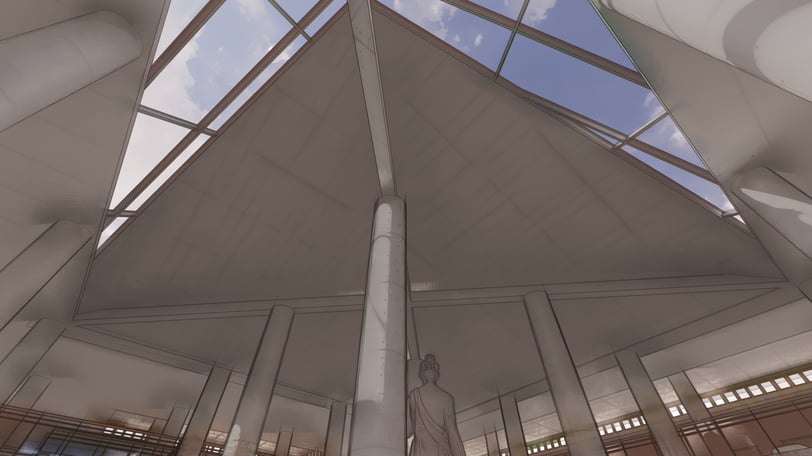
Amalgamation Strategies Of Modernist Theories In The Contemporary Settings
Contemporary features of Architecture welcome eclecticism, its fusion with modernism is not a novel event in the architectural design paradigm. In this blog, we will go through some key aspects and benefits of amalgamation.
THEORETICAL ARCHITECTURE
Mahmuda Yasmin Dola, Muhammad Golam Sami
3/14/20193 min read



Image: Modern Art Museum Design Project of Muhammad Golam Sami '19


The huge distinctions between modernist and contemporary architectural environments and techniques are well acknowledged. Whereas modernism is based on a structured grammar, functional purity, simplicity, minimalism, a robust linear approach, technology and social progression, and historical and ornamental declination, contemporary architecture is based on sustainability, innovative materials, adaptability, fusion of different architectural styles, and eclecticism. However, because contemporary settings welcome eclecticism, its fusion with modernism is not a novel event in the architectural design paradigm. In this blog, we will go through some key aspects and benefits of amalgamation.
One distinguishing element of modernism is its open and flexible layouts. Creating environments that are adaptable to reuse. The plasticity of a room, yet modern settings foster its multidimensional adaptability and space efficiency. Suppose we adopt the open floor plan to current practice. In that case, we may create flexible interior spaces through load-bearing walls, or we may design the space in such a manner that it may adapt to multiple purposes over time or modify itself as needed. On its own, this fusion can be an adaptable and efficient contemporary architectural solution. Given the discussion of adaptive reuse, contemporary architecture might be described as repurposing functional integrity. Perhaps we can update a modern historical design based on adaptive functionality for current functional reuse. We may also use this operational adaptability to build a new architectural space, whether for a public or domestic function. Still, we can improve the performance of the space by incorporating modernism's functional adaptability.
Firstly, modernism supported a minimalistic approach, including simple shapes, linear integrity, flat roofs, huge glass windows, etc. Furthermore, excessive architectural focus is avoided. We all know that economic efficiency is a significant factor in modern practice and is linked to environmental sustainability.
As we reduce unnecessary architectural exaggeration, eliminate excessive ornamentation, and incorporate elements that promote cost efficiency, the energy embedded in those elements is saved, the carbon footprint is reduced, especially given our reliance on nature for materials, and we can achieve environmental sustainability. This partially supports our third point, namely, long-term success.
Modernism enabled us to develop numerous new materials and construction processes. Its application also teaches us how to facilitate better placemaking practically and adaptively. In today's practice, sustainable innovation is a significant trend. It could be new energy-efficient materials, heating and cooling systems, or environmentally friendly room design. This is the forward-thinking approach that modernism pioneered.
With an inventive mindset, we may now create sustainable inventions that benefit nature and human welfare and seek new sustainable and energy-efficient materials. As a result, it would not be incorrect to describe it as a fusion with modernism.
Finally, modernism has significantly impacted our functional usefulness since it did not evolve to be connected to any time or cycle. It is a theoretical technique reflecting a continuous system rather than time-bound. As part of this ongoing system, contemporary architectural practice evolved and merged with the positive characteristics of modernism. It was a blessing for modernist architecture because it ushered in a paradigm change that altered architectural styles and the entire human civilization.

Meet The Authors



Mahmuda Yasmin Dola
B. Arch, Khulna University of Engineering & Technology, Khulna, Bangladesh Architect | Analytical Practitioner
Head of Construction, ADORA Studios, Bangladesh
CMO & Head of Construction, SS Construction & Power Solution, Bangladesh


Muhammad Golam Sami
B. Arch, Khulna University of Engineering & Technology, Khulna, Bangladesh Architect | Futurist | Sustainable Design Expert
Operational Head, ADORA Studios, Bangladesh
Founder, samism.org
Lecturer, Department of Architecture
Northern University of Business & Technology

Related Articles



